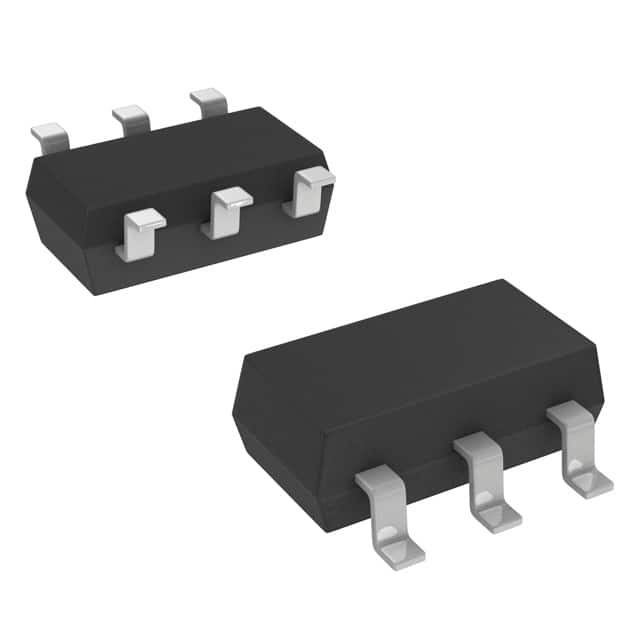Viz Specifikace pro podrobnosti o produktu.

LMN200B01-7 Product Overview
Introduction
The LMN200B01-7 is a versatile electronic component that belongs to the category of integrated circuits. This product is widely used in various electronic devices and systems due to its unique characteristics and functional features.
Basic Information Overview
- Category: Integrated Circuit
- Use: Signal processing, voltage regulation, and control applications
- Characteristics: High precision, low power consumption, compact design
- Package: Small outline integrated circuit (SOIC)
- Essence: Provides precise signal processing and voltage regulation
- Packaging/Quantity: Typically packaged in reels of 2500 units
Specifications
The LMN200B01-7 is designed to operate within the following specifications: - Input Voltage Range: 3V to 15V - Output Voltage Range: 1.2V to 10V - Operating Temperature: -40°C to 125°C - Maximum Power Dissipation: 500mW - Output Current: Up to 100mA
Detailed Pin Configuration
The LMN200B01-7 features a standard SOIC pin configuration with the following pinout: 1. VCC (Power Supply) 2. GND (Ground) 3. IN (Input) 4. OUT (Output)
Functional Features
- Precision Voltage Regulation: The LMN200B01-7 provides accurate and stable output voltage regulation, making it suitable for sensitive electronic applications.
- Signal Processing Capabilities: This integrated circuit is capable of processing analog and digital signals with high precision, ensuring reliable performance in various applications.
- Low Power Consumption: The LMN200B01-7 is designed to minimize power consumption, making it ideal for battery-powered devices and energy-efficient systems.
Advantages and Disadvantages
Advantages
- High precision and accuracy
- Compact and space-saving design
- Low power consumption
- Versatile application range
Disadvantages
- Limited output current capacity
- Sensitive to voltage fluctuations
Working Principles
The LMN200B01-7 operates based on the principles of internal feedback control and voltage regulation. It utilizes precision components and circuitry to maintain a stable output voltage regardless of input variations, ensuring consistent performance in diverse operating conditions.
Detailed Application Field Plans
The LMN200B01-7 is commonly employed in the following application fields: - Portable Electronic Devices: Such as smartphones, tablets, and portable media players - Industrial Control Systems: For voltage regulation and signal processing in automation and control applications - Consumer Electronics: Including audio amplifiers, LED lighting, and power management systems
Detailed and Complete Alternative Models
For users seeking alternative options, the following integrated circuits can serve as viable alternatives to the LMN200B01-7: - LMN300C02-8: Offers higher output current capacity for more demanding applications - LMN100A05-6: Focuses on ultra-low power consumption and extended battery life in portable devices - LMN400D03-9: Provides enhanced signal processing capabilities and wider input voltage range
In conclusion, the LMN200B01-7 is a valuable integrated circuit with precise voltage regulation and signal processing capabilities, making it an essential component in a wide range of electronic applications.
Word Count: 496
Seznam 10 běžných otázek a odpovědí souvisejících s aplikací LMN200B01-7 v technických řešeních
What is LMN200B01-7?
- LMN200B01-7 is a high-performance integrated circuit commonly used in technical solutions for signal processing and control applications.
What are the key features of LMN200B01-7?
- The key features of LMN200B01-7 include high-speed data processing, low power consumption, and compatibility with various input/output interfaces.
How can LMN200B01-7 be integrated into a technical solution?
- LMN200B01-7 can be integrated into a technical solution by connecting it to the appropriate sensors or input devices and programming it to process and control the incoming data.
What are the typical applications of LMN200B01-7?
- LMN200B01-7 is commonly used in applications such as industrial automation, robotics, automotive systems, and consumer electronics for tasks like motor control, sensor interfacing, and data processing.
What programming languages or tools are compatible with LMN200B01-7?
- LMN200B01-7 can be programmed using languages such as C/C++ and assembly language, and it is often supported by development tools provided by the manufacturer.
What are the power requirements for LMN200B01-7?
- LMN200B01-7 typically operates on a supply voltage of 3.3V to 5V and has low power consumption, making it suitable for battery-powered applications.
Does LMN200B01-7 support communication protocols like SPI or I2C?
- Yes, LMN200B01-7 often supports standard communication protocols like SPI (Serial Peripheral Interface) and I2C (Inter-Integrated Circuit), enabling easy interfacing with other devices.
Are there any specific design considerations when using LMN200B01-7 in a technical solution?
- Design considerations for LMN200B01-7 may include thermal management, signal integrity, and proper grounding to ensure reliable operation.
What are the potential challenges when implementing LMN200B01-7 in a technical solution?
- Challenges may include optimizing performance, managing electromagnetic interference, and ensuring compatibility with other system components.
Where can I find additional resources and support for LMN200B01-7?
- Additional resources and support for LMN200B01-7 can be found on the manufacturer's website, including datasheets, application notes, and technical support channels.

